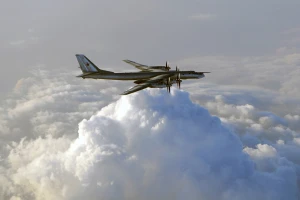
NATO lacks 49 brigades, needs force four times Germany's army to meet minimum standards
NATO’s Joint Forces Headquarters has stressed the need to increase its forces by 1.5 times and to triple ground-based air defense capabilities in order to meet current security demands
NATO must significantly bolster its defense capabilities, increasing the number of combat brigades from 82 to 131, and expanding its corps and divisions from 24 to 38. This is considered the minimum requirement for effective defense. Ground-based air defense, which must be nearly rebuilt from scratch, needs to grow from 293 to 1,467 units. The number of helicopter units should also rise from 90 to 104, along with a necessary strengthening of logistics and transport capabilities.
According to Defense Express, these ambitious expansion requirements were outlined in a document signed by NATO Supreme Allied Commander Europe, General Christopher G. Cavoli, and Pierre Vandier, head of NATO's Transformation Command, which was obtained by the German outlet Die Welt. The report highlights the monumental scale of the task, emphasizing how the issue of collective security within NATO has transformed into one of "collective irresponsibility." The need to increase military forces by over 1.5 times demonstrates the severity of the situation.
Breaking down the numbers, NATO must add 49 brigades, with each brigade comprising around 5,000 soldiers—totaling an additional 245,000 troops. This figure is striking, especially considering that the German army has only 62,000 ground troops, meaning NATO would effectively need the equivalent of four additional German-sized armies. To put this into perspective, this increase exceeds twice the size of France’s entire army, which stands at 114,000 soldiers, and represents more than half of the U.S. Army’s total strength, which is around 453,000 soldiers.
In order to equip these 245,000 additional troops, NATO would need approximately 1,200 tanks, 2,700 infantry fighting vehicles, 3,000 armored personnel carriers, and 900 large-caliber artillery systems. The U.S. Army's own requirements are similar, with a need for 1,300 tanks, 2,300 infantry fighting vehicles, 5,000 APCs, and over 1,200 large-caliber artillery systems.
Beyond personnel and equipment, NATO faces the challenge of rebuilding its ground-based air defense systems, which were largely dismantled after the Cold War. This is particularly pressing in Europe, where nations like the UK only recently phased out their 50-year-old Rapier air defense systems in 2021, despite their limited range of 8 km. Germany, meanwhile, decommissioned its army’s medium-range air defense system in 2005 and has spent $1.23 billion over the past five years developing the NNbS air defense system.
While this expansion will require significant financial investment, NATO’s document stresses that meeting these minimum requirements will demand spending "well over 2% of GDP," but perhaps an even more critical resource will be time.
- News













































